Drosera Capensis is a perennial carnivorous plant and the most common sundew variety sold at gardening centers. This sundew variety is one of the easiest to grow. Have you recently got your carnivorous plant and wondering if you need to dormant it this winter season? Here is the answer to your question.
Drosera Capensis or Cape Sundew does not need dormancy during winter. However, in cold climates, it will go dormant, and blooms will grow back after the winter season.
Are you excited to find out more about Drosera Capensis and learn how to care for this beautiful, free-flowering perennial? We searched the web and collected all the necessary details for you. Continue reading throughout this post to understand more about Drosera Capensis.
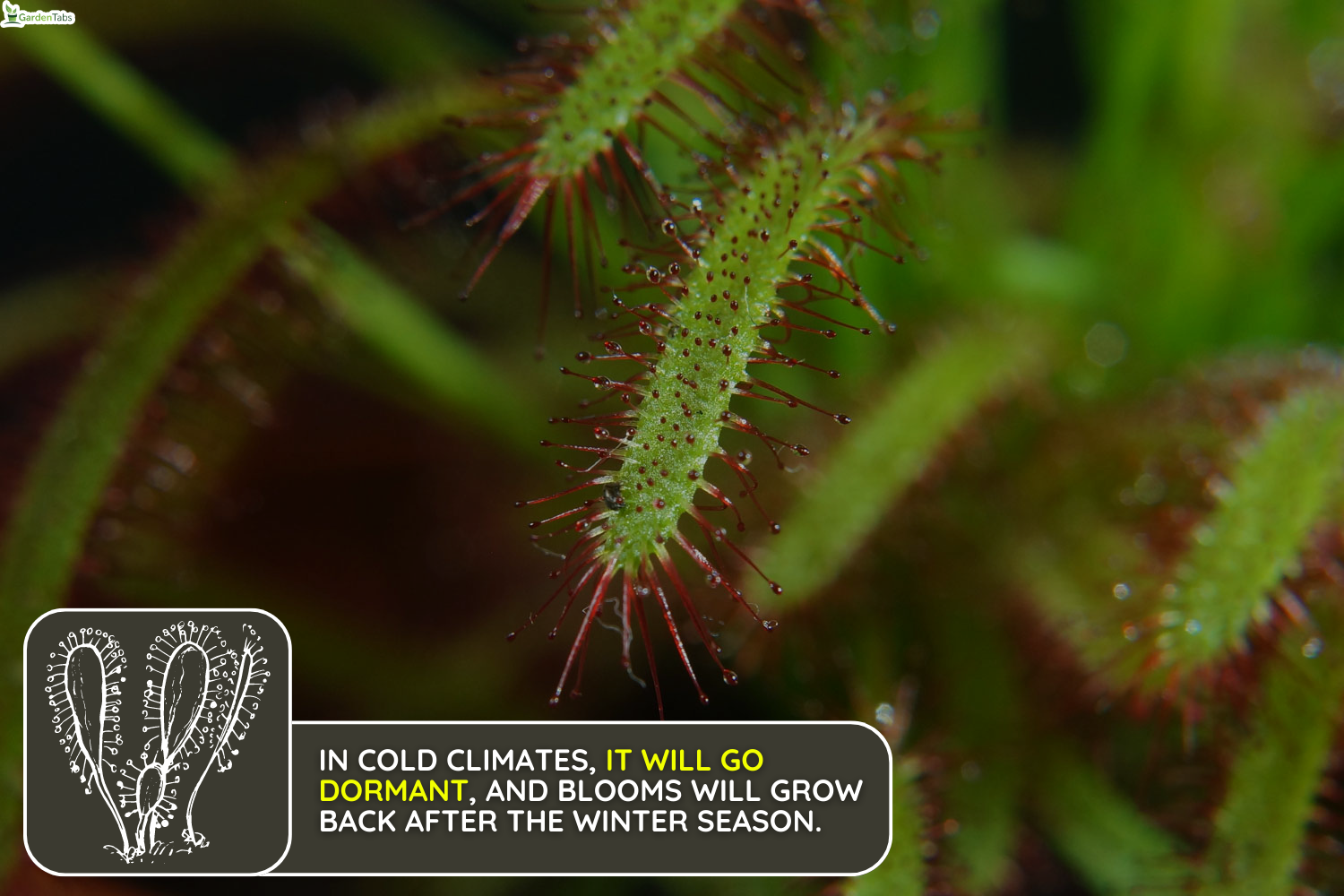
What Drosera Capensis Need During Winter?
Drosera Capensis does not require dormancy or winterizing in winter, but there is a viable delayed growth because of extreme cold exposure. This carnivorous plant can tolerate cold temperatures over 50 degrees Fahrenheit, but you should keep this plant indoors, free from frosting. Use an artificial light for 14 hours.
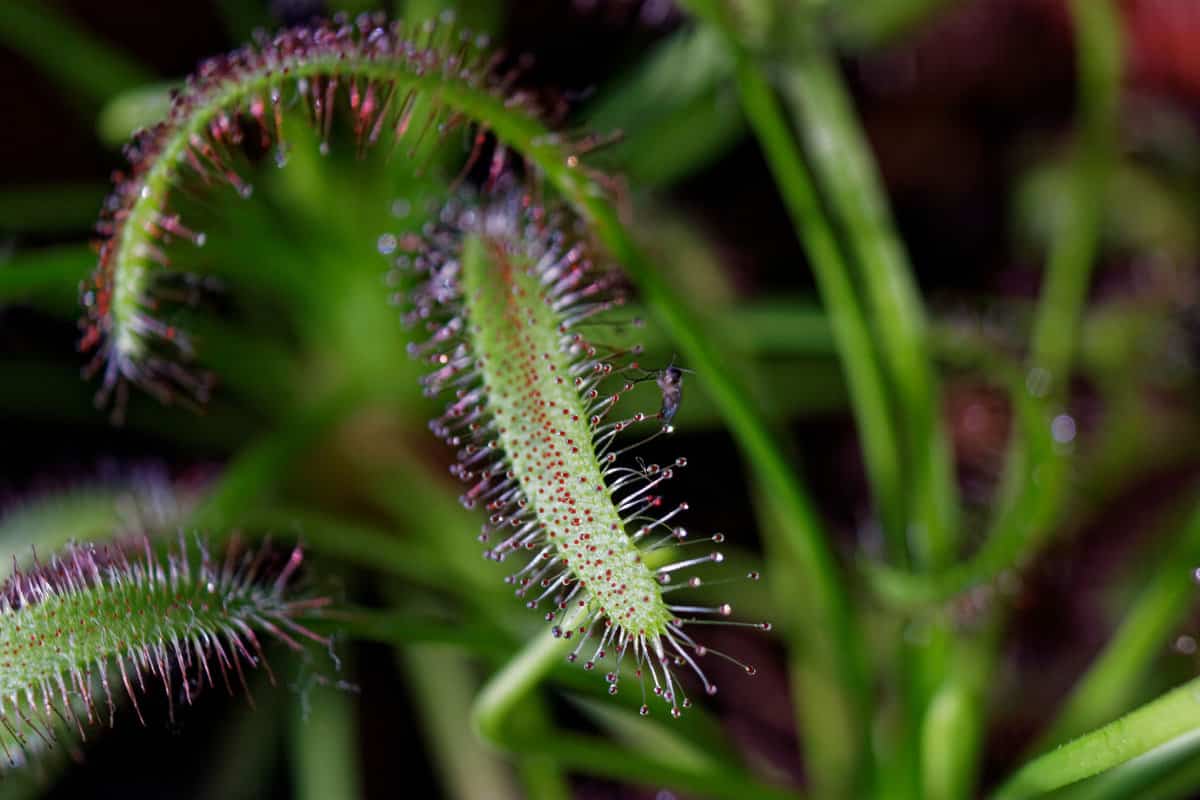
How To Water Drosera Capensis?
Use a water tray method in watering Drosera Capensis. Place the pot on a tray about 1 inch with water in it. This plant needs moisture, and it is best to water it every two days or so. Avoid getting water on the plant's leaves because it is harmful to Drosera Capensis.
Let the pot sit in the water tray in spring, summer, and fall, and change the water frequently. It is best to use distilled, reverse osmosis, or rainwater, and avoid using tap water. Do not dry out Drosera Capensis in winter but avoid leaving the plant in the water for too long.
Can Sundew Eat Human Flesh?
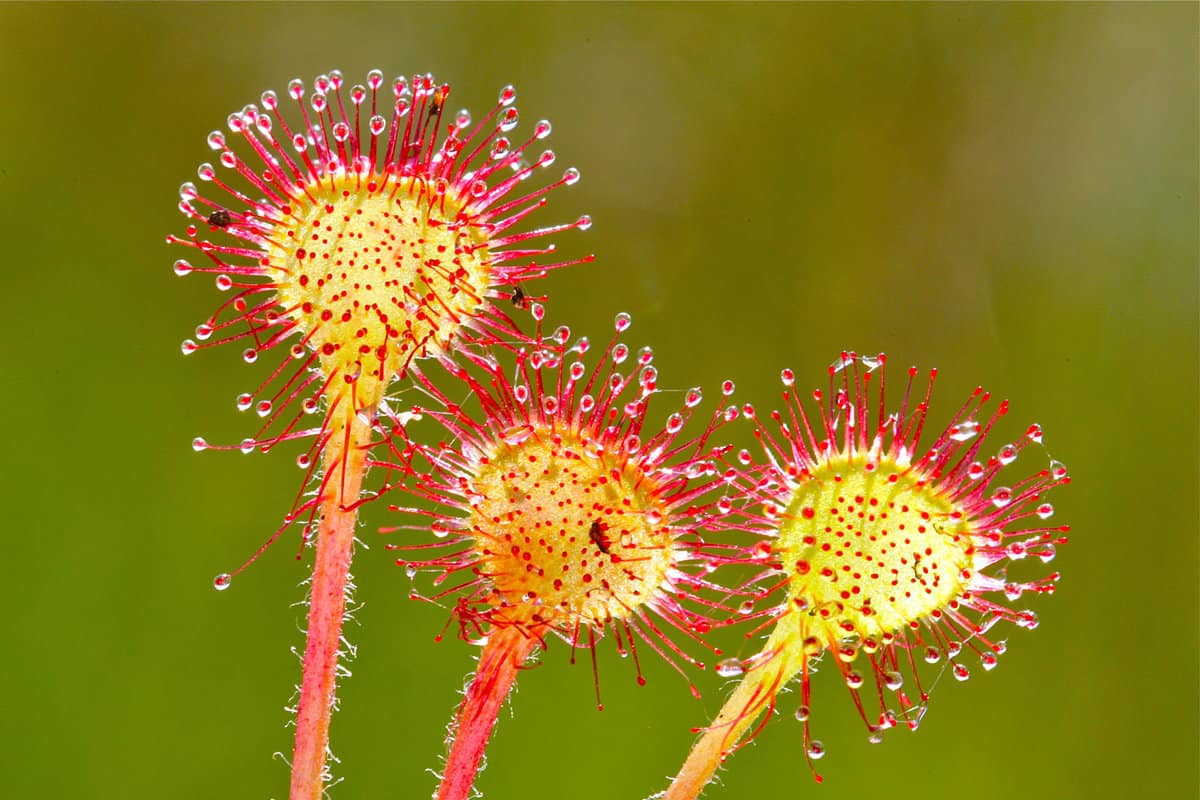
Sundew varieties can't eat human flesh because they are too small and prefer insects. A sundew plant only grows up to 25 centimeters, and some sundews are even smaller, so these carnivorous plants cannot harm people.
Touching the plant is riskier for it than it is for you. The tentacles have dew, and they need it to trap and capture insects. Drosera Capensis uses many resources to produce that dew, and it is a waste if it just sticks to your hand.
How To Care For Drosera Capensis?
Taking care of Drosera Capensis is easy and does not need a lot of work. Here are the things to remember in taking care of Drosera Capensis:
- Drosera Capensis requires moist peat moss and perlite soil mix. Sundew won't survive in dry soil.
- This plant needs 8 hours of natural or artificial light on warmer days, and the temperature is within 65 to 100 degrees Fahrenheit.
- Avoid applying fertilizer to the soil because it is fatal to the plant. This carnivorous plant does not require fertilizer, not even a diluted amount. Enriched soil is a big no for them. Miracle-Gro and other fertilizers with high concentrations are not recommended as plant food for Drosera Capensis. Cape Sundews prefer poor soil and they obtain the necessary nutrients needed from their prey. However, you may need to feed the plant if needed.
Here is the list of food you can give to your Drosera Capensis:
Frozen Or Freeze-Dried Bloodworms
Dried bloodworms are rich in minerals, proteins, and multivitamins, which are essential for turtles, tropical fishes, and more.
Click here to check dried bloodworms on Amazon.
Here is how to feed Drosera Capensis using dried bloodworms:
- Lay down some dried bloodworms on a piece of paper.
- Use a rolling pin and crush the dried bloodworms.
- Put the crushed dried bloodworms in a container and add water.
- Use a syringe to feed the mixture to your plant.
- Drop a small amount of the mixture on the tip of each leaf.
Watch the video to learn more about how to feed dried bloodworms to Drosera Capensis.
Crushed Beta Fish Food Pellets
Betta fish food is naturally made from vegetables, fresh meat, and seaweed. There are no artificial flavors, additives, byproducts, coloring, or harmful ingredients.
Click here to check betta fish food on Amazon.
Here is how to feed betta fish food pellet to your Drosera Capensis:
- Ensure that the food you want to feed your plant isn't too big.
- You can use the crushed leftover from the bottom of the bag or crush the pellets yourself.
- Sprinkle the crushed pellet over the leaves.
- Feeding them yourself will help if you find your cape sundews getting smaller or growing slowly.
Watch the video to learn about how to feed crushed fish food pellets to Drosera Capensis.
Wingless Fruit Flies
Wingless fruit flies are available and live arrival guarantee. These fruit flies are ideal for feeding dart frogs and small insectivores.
Click here to check wingless fruit flies on Amazon.
Here is how to feed wingless fruit flies to your Drosera Capensis:
- You can buy fruit flies from online shops.
- Pour several fruit flies into your Drosera Capensis.
- You will see the flies get stuck in tentacles' dews.
Watch the video to learn about feeding wingless fruit flies to Drosera Capensis.
Fungus Gnats
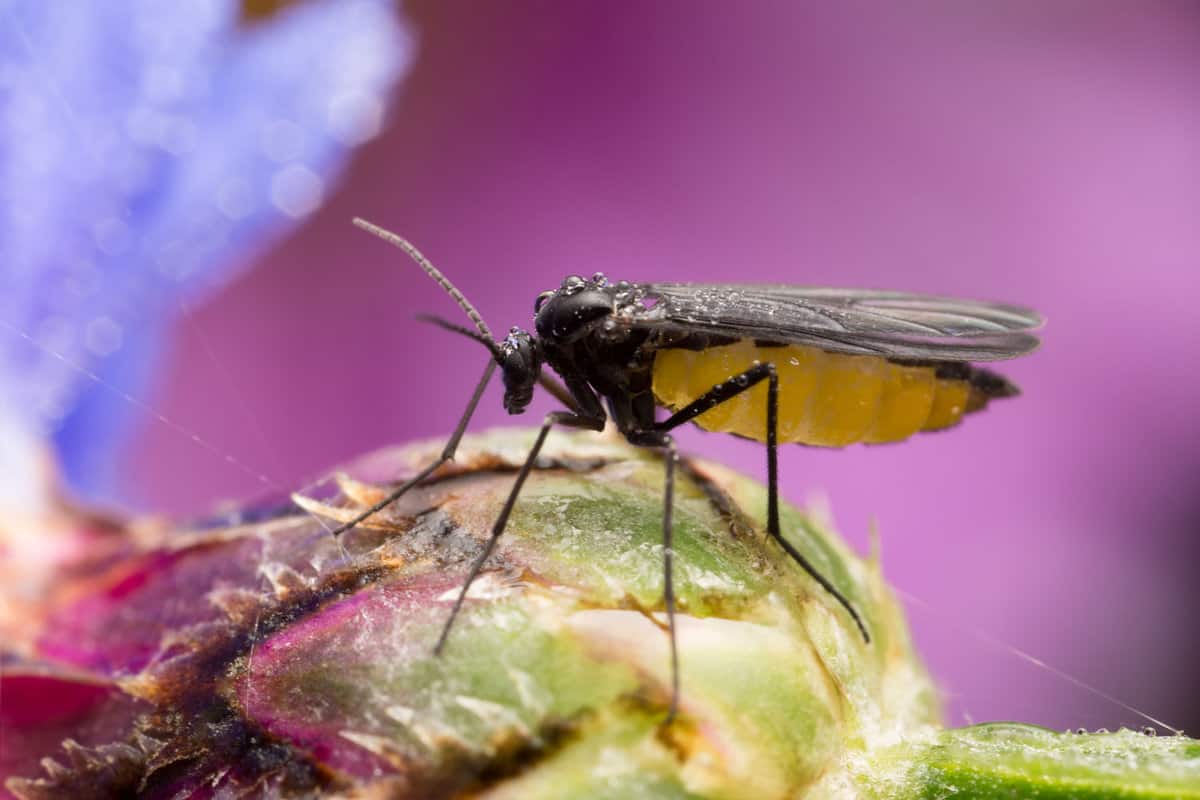
Fungus gnats are inevitable if you have houseplants. If you put your plants outside and bring them back in, they could also bring fungus gnats. These fungus gnats lay their eggs on a moist soil surface.
If you want to get rid of fungus gnats in your garden, you can have Drosera Capensis in your home or garden to eat them.
Watch the video to learn more about fungus gnats as Drosera Capensis food.
What Are The Health Benefits Of Drosera Capensis?
Drosera Capensis has been part of treating various ailments, such as coughs, tuberculosis, eye and ear infection, and more, for many years. It is also used as a tea known to have an aphrodisiac effect.
How To Propagate Sundews?
Here are the steps to propagate sundews through cuttings:
- Get a container you will use to propagate your sundews.
- Put moist moss in the container and flatten it.
- Pour water into the soil, enough to moisten it but not flood.
- Get sharp scissors and cut a leaf closer to the bottom of the plant.
- You may want to use tongs to pick small leaves of tiny sundews. Place the cut leaf and sit it into the soil. The cut part should stick into the moss.
- Place the container in a spot with bright light.
Watch the video to learn how to propagate sundews.
What Pest And Disease Can Drosera Capensis Have?
These are the common pests and diseases Drosera Capensis prone of:
Aphids
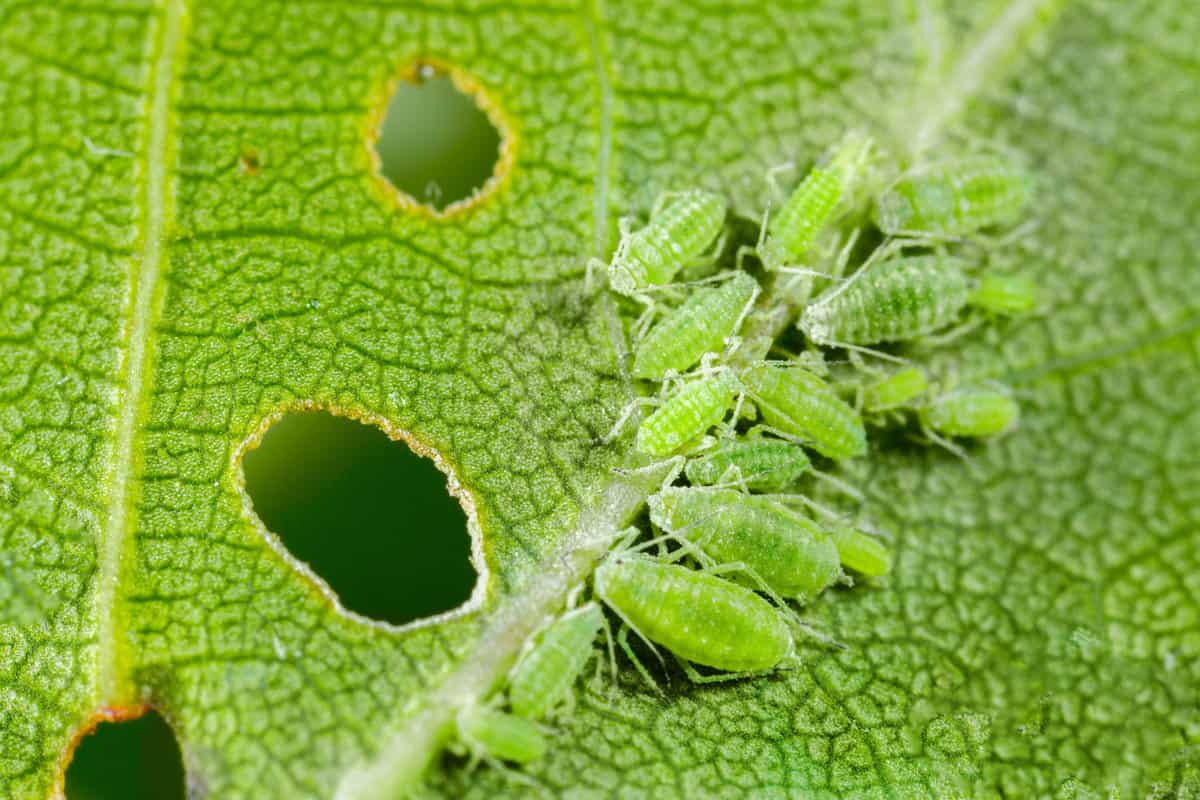
Aphids are white-green bugs that can do so much harm to Drosera Capensis, and they are active in early spring. These aphids can move without being trapped by the plant's dew. Drosera can tolerate a few aphids, but once the infestation worsens, the leaves wilt, stunt, and signs of damage appear.
According to the discussion in a forum, one way to control aphids is to submerge the plant in water for a couple of days. Another way is through cuttings. You can also move the pests manually if they aren't too many. Carnivorous plants are sensitive to chemicals.
Mealy Bugs
Mealy bugs are small white, faded-red, and fluffy masses of insects that damage and weaken plants. Although it is not a problem for Cape Sundews because they do trap bugs. Cape Sundews tightly grips its prey for several hours using its leaves. This way, Cape Sundews extract more nutrients from the insects. Mealybugs also attack other carnivorous plants such as Nepenthes and Sarracenia.
However, these mealy bugs, thrips, and other pests can cause deformity in new plant growth especially if the infestation is severe. Removing the pest manually is the solution to control these pests. Avoid using soap-based insecticides.
Watch the video to learn more about Drosera Capensis trapping bugs.
Summary
Growing Cape Sundew or Drosera Capensis is easy to grow and cold-hardy. It does not require dormancy to survive winter and grows back as long as you keep it indoors when the outside temperature is below 50 degrees Fahrenheit.
We discussed important things to consider in how to take care of Drosera Capensis. We hope we helped you through this post. Have fun growing your sundew!
For more helpful gardening tips, here are the posts that can guide you:
How Big Do Venus Flytraps Get; How Long Does It Live [Inc. Indoors Vs. Outdoors]?



